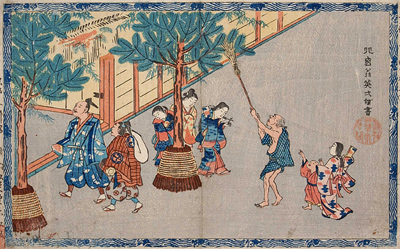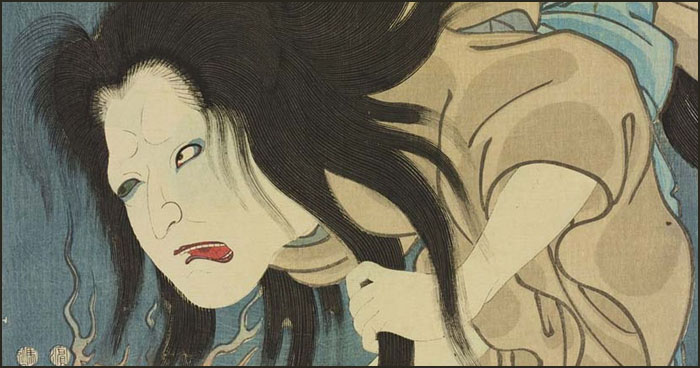[ . BACK to DARUMA MUSEUM TOP . ]
. Yamagata Folk Art - 山形県 - Introduction .
::::::::::::::::::::::::::::::
Yamagata Mingei 山形市民芸 Folk art from Yamagata city

quote
Yamagata (山形市 Yamagata-shi) is the capital city of Yamagata Prefecture located in the Tōhoku region of northern Japan.
The Mogami River passes through the city, which includes Mount Zaō within its borders. ...
The area of present-day Yamagata was part of Dewa Province. During the Edo period, it was the center of Yamagata Domain under the Tokugawa shogunate. The modern city of Yamagata was founded on April 1, 1889 as the capital of Yamagata Prefecture. The city attained Special city status on April 1, 2001.
source : More in the Wikipedia
::::::::::::::::::::::::::::::
. butsudan, Yamagata Butsudan 山形仏壇 Buddhist Family Altar .
. hariko, Yamagata hariko 山形張り子 papermachee dolls .
. . . . . including Shibue ningyoo 渋江人形 Shibue dolls
. . . . . tako ni neko 蛸に猫 octopus cuddeling a manekineko cat
..............................
Hirashimizu-yaki 平清水焼 Hirashimizu pottery
. Hirashimizu - Vase with Daruma san .
Hirashimizu, the "Pottery Village, to the south of Yamagata city is a renowned pottery producing area.
It started with 小野藤次平 Ono Fujitsugitaira (Onofuji Jihei) around 1810, who settled here, coming from Hitachi province.
Around 1830, 安倍覚左エ門 Abe Satoshihidariemon (Abe Kakuza Doraemon) from the Soma clan settled here.

It is said that at its peak there were some 20 producers in the area. This number has now dwindled to six which are enjoying the recent boom in ceramics. The peach Celadon style whereby the iron particles protrude through the celadon glaze giving the pottery a peach-skin effect is particularly well known. Pottery lessons and tours of the buildings where the potters sit at their wheels can be arranged by the Shichiemon, Bun'emon and Heikichi potters.

Hirashimizu Daruma
Hirashimizu ningyoo 平清水人形 Hirashimizu clay dolls
..............................
imono 山形鋳物 ironware, cast iron, metal art

「山形鋳物」950年の歴史 - 950 years of history
source : pref.yamagata.jp/ou/shokokanko
- quote -
- Yamagata Ironware: matured over 900 years
- Cutlery and Implements
Inheriting the tradition of swordsmiths, the challenge for new craftwork for Yamagata swordsmith.
It is said that around 650 years ago, the founder for Mogami family, Kaneyori Shiba (1315-1379) moved to Yamagata. He took his own smiths with him. Swords and farm equipment were produced according to times. Currently, scissors, knife and sickle are produced. The amount of production for cutlery and implements is highest in Tohoku area.
"Kaji-shou" is the brand for smith groups trying to create new design.
They are careful in selecting the technique(free forging) and materials (Blue Paper steel). They focus on modern design, sharpness and easy use.
- - - - - details
- source : www.yamagata-export.jp
- quote -
Yamagata Casting
In Yamagata city, Yamagata prefecture, there are two towns with peculiar names – Do machi and Imono (cast metal) machi. The names of these places are derived from the local specialty Yamagata Imono.

The origin of Yamagata Imono dates back to the Heian era (from 794 to 1185 or around 1192). When Minamoto no Yoriyoshi, a famous warlord during the Heian era, visited the Tohoku region to suppress a revolt (called the Battle of Zenkunen-no-eki), the imono artisans who had been brought along found that the sand in the Mamigasaki river running through Yamagata city and the soil around the Chitose park were perfect for imono. Some of them stayed in the area and began producing imono, which is said to be the beginning of Yamagata Imono. Later on, imono was presented as a tribute when Yamagata castle was built.
During the Edo era (1603 – 1868) when the life of common folk became more stable and different crafts began blooming in many parts of the country, a domain lord named Mogami Yoshiaki reorganized the castle town, gathered up imono artisans and established a town dedicated to imono, the current Do machi. It was around this time that foot-operated fans were brought in and the production of large imono items such as temple bells and garden lanterns started. As many people visited the Dewa-sanzan mountain, Yamagata Imono turned into souvenirs such as Buddhist altar articles and everyday products which rapidly spread the name nationwide and expanded its application from traditional craftworks to the production of sewing machines and automobile components. In 1974, part of the production in Do machi moved to the Yamagata Imono industrial complex, as more space was needed, and Imono machi was thus established. This is the history behind the unique names of these towns.
Yamagata Imono, which evolved from being the products of imono artisans serving warlords to everyday items in Japan, comes in a variety of forms, from large items such as bells, garden lanterns and machine components to more familiar ones like knives and frying pans. Yet every single product represents the soul of Yamagata Imono, with their accurate arrangement, smooth surface, strength and beauty.
- source : japan-brand.jnto.go.jp/crafts -
. tetsubin 鉄瓶 iron kettles - Introduction .
..............................
. Kokeshi 山形こけし Yamagata Kokesh wooden dolls .
..............................
. sashimono, Yamagata Sashimono 山形指物 cabinetry .
..............................
kasen-dako 花泉凧 Kasen Kite
- (not : hanaizumidako) -

varieties:
こま凧(虎) komadako tiger - こま凧(福助) komadaku Fukusuke - くらげ凧(うさぎ) kuragedako usagi - 角凧(蛇王丸)kakudako
This type of kite was first produced by 阿部華泉(あべかせん) Abe Kasen around 1840 in the suburb of 八日町 Yokamachi in Yamagata town.
In the local dialect they are called obata 小旗 "small flags".
The Abe family is now in the fourth generation making these kites, the present Abe san lives in 天童市 Tendo.
- reference source : pref.yamagata.jp/ou/
There is a legend about おせんと蛇王丸 O-Sen and ?Hebiomaru.
. tako 凧 Kites of Japan - Introduction .
::::::::::::::::::::::::::::::
quote (seems a google translate site)
Yamagata Shikki Lacquerware (Yamagata City) 山形漆器(山形市)
Lacquerware making using a special product of Yamagata
its history from more than 300 years ago
Yamagata that lacquerware have been made from more than 300 years ago. Work of lacquerware making is, plate products wooden base positions, paint jobs, decorative, performed in the sale and division of labor, in the Taisho period referred to as the dozens of lacquerware was in the artisan town. The technique basis, without leaving a brush uneven, but show the lacquer of the gloss "flower painting" was developed, currently, the only long-established to continue the lacquerware making in Yamagata "Honke Nagato (Nagato) in shop", its own "KennoSuke of (Gon'no Yosuke) we are coating".
Traditional coating technology and
has combined modern performance "assistant coating Noriyuki authority"
Kenno Jonuri is a technique that Yamaguchi Kenno assistant's predecessor and the current 13 generations that hope revival of Yamagata lacquerware devised while repeating the trial, subjected to a hand-carved of safflower pattern on the wooden base, from the base coat in this lacquer carried out until the top coat, further sow the red iron oxide pigment "Shu蒔(main winding) will finish on top of the Law". Jonuri Noriyuki Kwon This unique technique has been popular as a tractable folk tone lacquerware durable.
- TBA -
Yamagata Tategu (furnishings) (Yamagata City) 山形建具(山形市)
Kiri-bako (box made from paulownia) (Yamagata City) 桐箱(山形市)
Tokogei (Rattan Crafts) (Yamagata City) 籐工芸(山形市)
Kirihata-no-Mokkohin (Wooden Works made in the Kirihata district)切畑の木工品(臼)
Yamagata Nokogiri (Saws) (Yamagata City) 山形鋸(山形市)
Yamagata hitting cutlery (Yamagata) 山形打刃物(山形市)
Wa-gasa, wagasa (Japanese traditional umbrella)(Yamagata City) 和傘(山形市)
? Kirigami (paulownia paper) (Yamagata City) ?
- source : . . pref.yamagata.jp/ou/shokokanko
::::::::::::::::::::::::::::::
. Reference ー 山形市 民芸品
.
. gangu 玩具 伝説, omochcha おもちゃ toy, toys and legends .
- Introduction -
::::::::::::::::::::::::::::::

. Join the MINGEI group on facebook ! .
. Regional Folk Toys from Japan .
. Japan - Shrines and Temples .
. Tohoku after the BIG earthquake March 11, 2011
[ . BACK to WORLDKIGO . TOP . ]
[ . BACK to DARUMA MUSEUM TOP . ]
- - - #yamagatatown #yamagata #ironware #metalware #castiron - - - - -
::::::::::::::::::::::::::::::
--
Posted By Gabi Greve to Omamori - Japanese Amulets on 12/12/2016 09:59:00 am















































